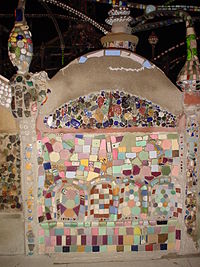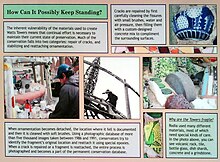
Watts is a neighborhood in southern Los Angeles, California. It is located within the South Los Angeles region, bordering the cities of Lynwood, Huntington Park and South Gate to the east and southeast, respectively, and the unincorporated community of Willowbrook to the south.
The culture of Los Angeles is rich with arts and ethnically diverse. The greater Los Angeles metro area has several notable art museums including the Los Angeles County Museum of Art (LACMA), the J. Paul Getty Museum on the Santa Monica Mountains overlooking the Pacific, the Museum of Contemporary Art (MOCA), and the Hammer Museum. In the 1920s and 1930s Will Durant and Ariel Durant, Arnold Schoenberg and other intellectuals were the representatives of culture, in addition to the movie writers and directors. As the city flourished financially in the middle of the 20th century, culture followed. Boosters such as Dorothy Buffum Chandler and other philanthropists raised funds for the establishment of art museums, music centers and theaters. Today, the Southland cultural scene is as complex, sophisticated and varied as any in the world.

The Forestiere Underground Gardens in Fresno, California are a series of subterranean structures built by Baldassare Forestiere, an immigrant from Sicily, over a period of 40 years from 1906 to his death in 1946. The gardens are operated by members of the Forestiere family through the Forestiere Historical Center, and can be considered a spectacular and unconventional example of vernacular architecture.
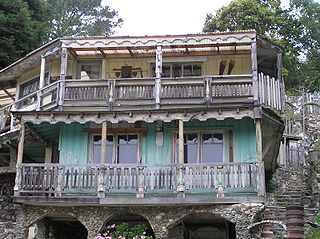
Nitt Witt Ridge is a house on two and a half acres in the coastal city of Cambria, California, United States. Artist and recluse Arthur "Art" Harold Beal (1896–1992) bought his hillside lot in 1928 and spent most of the next 50 years carving out the terraces with only a pick and shovel, creating his own "castle on a hill".

Betye Irene Saar is an African American artist known for her work in the medium of assemblage. Saar is a visual storyteller and an accomplished printmaker. Saar was a part of the Black Arts Movement in the 1970s, which engaged myths and stereotypes about race and femininity. Her work is considered highly political, as she challenged negative ideas about African Americans throughout her career; Saar is best known for her art work that critiques American racism toward Blacks.
Alison Saar is a Los Angeles, California based sculptor, mixed-media, and installation artist. Her artwork focuses on the African diaspora and black female identity and is influenced by African, Caribbean, and Latin American folk art and spirituality. Saar is well known for "transforming found objects to reflect themes of cultural and social identity, history, and religion."
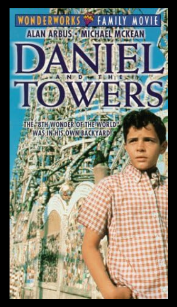
Daniel and The Towers is a television film featuring the folk art masterpiece, the Watts Towers, in the Watts neighborhood of Los Angeles. The film was directed by Paul Schneider, and broadcast on PBS's WonderWorks children's anthology television series. It was released on VHS in 1992.
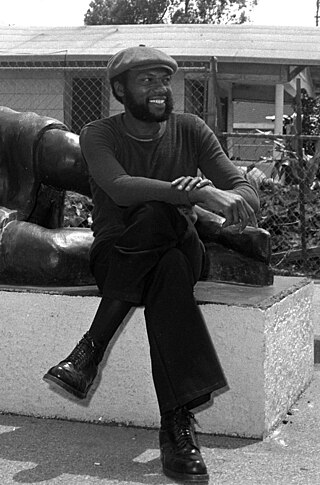
John Outterbridge was an American artist and community activist who lived and worked in Los Angeles, California. His work explores the issues surrounding personal identity such as family, community and the environment through the use of discarded materials.
I Build the Tower is a feature-length documentary film depicting the life of Sabato Rodia also known as Sam Rodia and Simon Rodia, the Italian immigrant who created the Watts Towers in South Los Angeles.
Sol Babitz was an American violinist, musicologist, teacher, writer, and pioneer of historically informed performance. He married artist Mae Babitz in 1942 and had two daughters, artist and writer Eve Babitz born in 1943 and designer Mirandi Babitz born in 1946. He lived in Hollywood across the street from the family of acting coach Jeff and Hope Corey. His family home was a musical and artistic salon with musicians Bernard Herrmann, Ingolf Dahl, Harry Lubin, Igor Stravinsky and poets Kenneth Rexroth, Kenneth Pagent, and Peter Yates and artists Eugene Berman and Vera Stravinsky. It was also where the Committee for Simon Rodia's Towers in Watts met to save the Watts Towers from being torn down.
Alexandra Grant is an American visual artist who examines language and written texts through painting, drawing, sculpture, video, and other media. She uses language and exchanges with writers as a source for much of that work. Grant examines the process of writing and ideas based in linguistic theory as it connects to art and creates visual images inspired by text and collaborative group installations based on that process. She is based in Los Angeles.
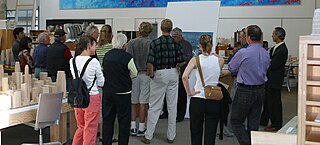
Peter Alexander was an American artist who was part of the Light and Space artistic movement in southern California in the 1960s. He is notable for his resin sculptures from the 1960s and 1970s.
Edgar Arceneaux is a contemporary artist who lives and works in Los Angeles, California. He is the co-founder of the Watts House Project, a non-profit neighborhood redevelopment organization in Watts.
Nicholas King was an American actor and horticulturist who was instrumental in preserving the Watts Towers.
Pacific Standard Time: Art in L.A., 1945–1980 was a scholarly initiative funded by the J. Paul Getty Trust to historicize the contributions to contemporary art history of artists, curators, critics, and others based in Los Angeles. Planned for nearly a decade, PST, as it was called, granted nearly 60 organizations throughout Southern California a total of $10 million to produce exhibitions that explored the years between 1945 and 1980. Underscoring the significance of this project, art critic Roberta Smith wrote in The New York Times:
Before [PST], we knew a lot [about the history of contemporary art], and that lot tended to greatly favor New York. A few Los Angeles artists were highly visible and unanimously revered, namely Ed Ruscha and other denizens of the Ferus Gallery, that supercool locus of the Los Angeles art scene in the 1960s, plus Bruce Nauman and Chris Burden, but that was about it. After, we know a whole lot more, and the balance is much more even. One of the many messages delivered by this profusion of what will eventually be nearly 70 museum exhibitions is that New York did not act alone in the postwar era. And neither did those fabulous Ferus boys.
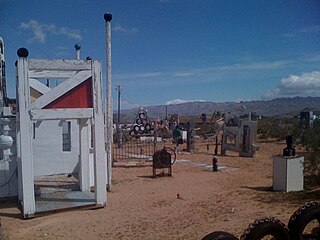
Noah S. Purifoy was an African-American visual artist and sculptor, co-founder of the Watts Towers Art Center, and creator of the Noah Purifoy Outdoor Desert Art Museum. He lived and worked most of his life in Los Angeles and Joshua Tree, California.
Saving and Preserving Arts and Cultural Environments is a non-profit public benefit organization created with an international focus on the study, documentation, and preservation of art environments and self-taught, publicly-accessible artistic activity. Currently based in Aptos, California, SPACES boasts an archive of approximately 35,000 photographs as well as hundreds of books, articles, audio and video tapes/DVDs, and artists’ documents. SPACES has become recognized internationally as the largest and most complete archive on this subject.
Jan Stussy (1921–1990) was an American artist, film producer, and professor. He was a professor emeritus from the University of California, Los Angeles (UCLA), he taught there for 42 years. He was awarded an Academy Award for the documentary film, Gravity Is My Enemy (1977). Stussy was a prolific painter and printmaker.

The Eastern Star Home was a retirement home and convalescent facility in Los Angeles, California for the members of the Order of the Eastern Star, Master Masons and their female relatives. Built between 1931 and 1936, the home operated until the late 1990s when membership in the home had decreased precipitously to just 34 residents. "The retirement home moved to a new location, and the Order of the Eastern Star sold the property at Sunset Boulevard to Archer School for Girls."







